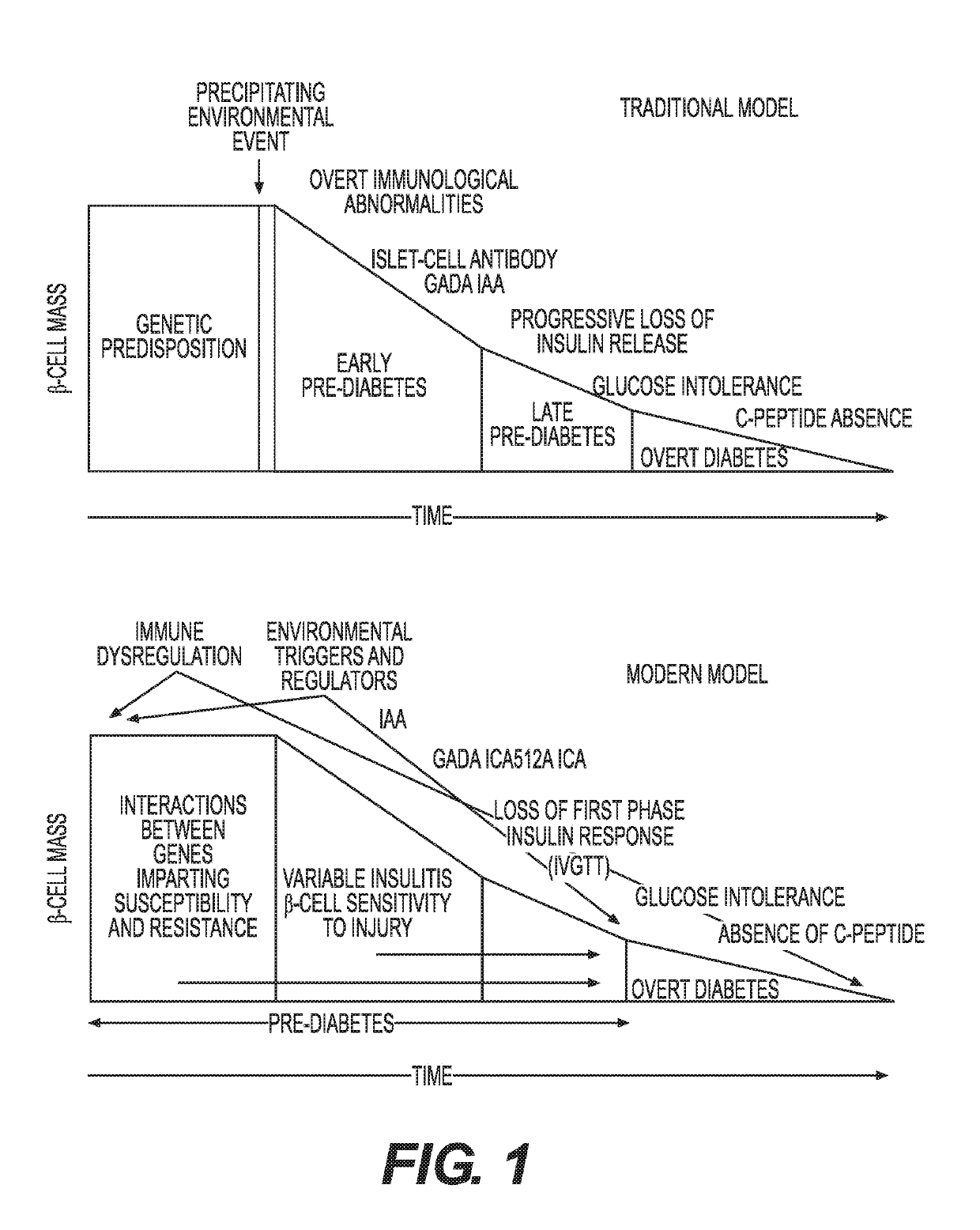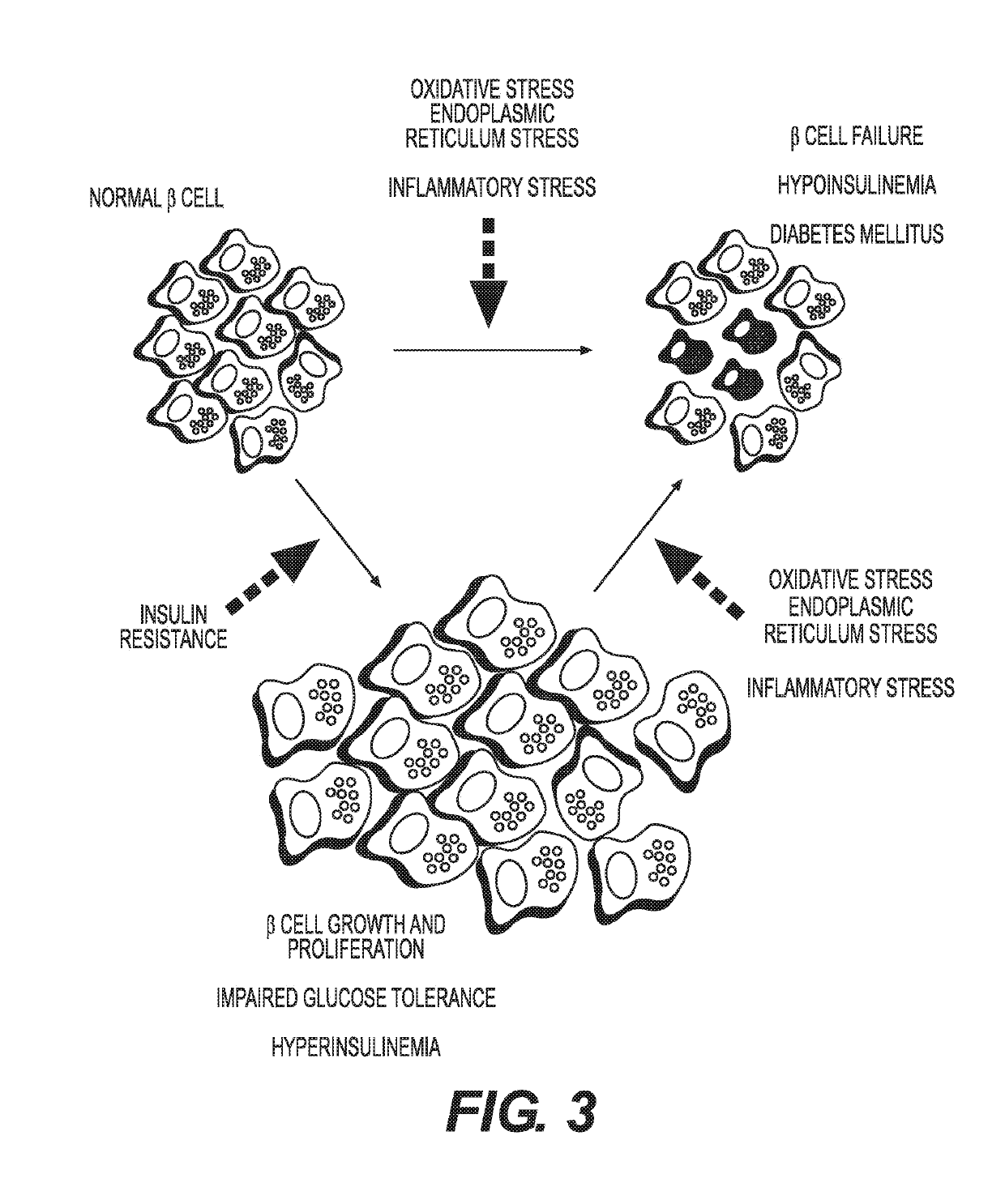Method of detection of clinically significant post-prandial hyperglycemia in normoglycemic patients
a clinically significant and postprandial hyperglycemia technology, applied in the field of clinically significant postprandial hyperglycemia in normoglycemic patients, can solve the problems of additional step, complicated and laborious mathematical calculations, etc., and achieve the effects of high risk, and low risk of occult pancreatic beta cell dysfunction
- Summary
- Abstract
- Description
- Claims
- Application Information
AI Technical Summary
Benefits of technology
Problems solved by technology
Method used
Image
Examples
examples
[0097]Study No. 1
[0098]A study was done wherein 100 patients were sampled at baseline (fasting) and again at 30 minutes, 1 hour, 90 minutes, and 2 hours post glucose load in an OGTT. Analytes listed in FIGS. 1-4 were measured. For each figure, glycemic status of the each patient was categorized into NGT, IFG, IGT, and COI according to standard guidelines issued by the American Diabetes Association (see DIABETES CARE, vol. 20, sup. 7, Jul. 1997). The figures then show whether the 1 hour glucose was above or below 155 mg / dL, which is the cutoff value established in the literature as a post-prandial hyperglycemic excursion value associated with increased risk of diabetes and resulting cardio-diabetic complications; this 1 hour cutoff value is further associated with decreased first phase insulin secretion response due to occult beta cell dysfunction in NOT individuals (see Abdul-Ghani and DeFronzo, DIABETES CARE, vol. 32, sup. 2, Nov. 2009). CLIX scores were calculated based on the mea...
PUM
 Login to View More
Login to View More Abstract
Description
Claims
Application Information
 Login to View More
Login to View More - R&D
- Intellectual Property
- Life Sciences
- Materials
- Tech Scout
- Unparalleled Data Quality
- Higher Quality Content
- 60% Fewer Hallucinations
Browse by: Latest US Patents, China's latest patents, Technical Efficacy Thesaurus, Application Domain, Technology Topic, Popular Technical Reports.
© 2025 PatSnap. All rights reserved.Legal|Privacy policy|Modern Slavery Act Transparency Statement|Sitemap|About US| Contact US: help@patsnap.com



